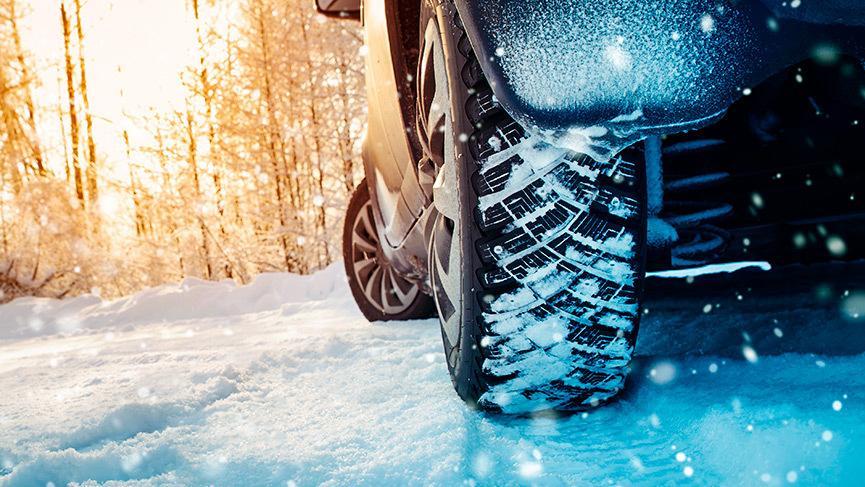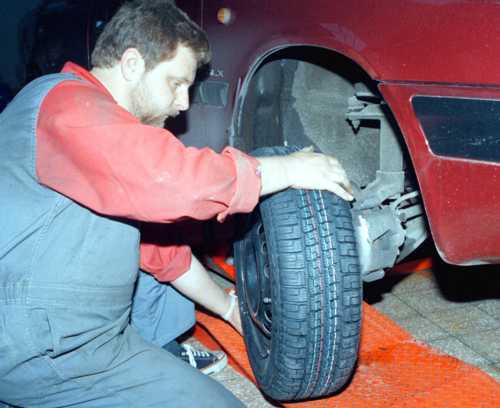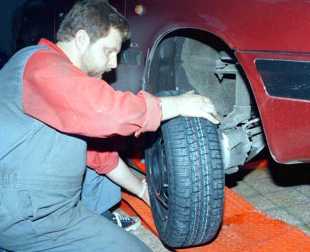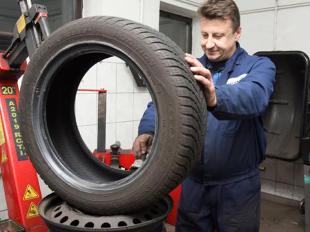
What you need to know about winter tires
 The winter season is fast approaching. Temperatures are getting colder and so you can be sure that the vulcanizers will be busy in the near future. When changing tires, it is worth remembering the basic, but extremely valuable tips.
The winter season is fast approaching. Temperatures are getting colder and so you can be sure that the vulcanizers will be busy in the near future. When changing tires, it is worth remembering the basic, but extremely valuable tips.
S the winter season is inexorably approaching. Temperatures are getting colder and so you can be sure that the vulcanizers will be busy in the near future. When changing tires, it is worth remembering the basic, but extremely valuable tips.
Drivers of all-season tires and those who replaced them  them earlier, they do not need to visit the vulcanizing plants for a while. Those who still use summer wheels, if they don't have winter tires yet, should look for them already. On the other hand, those who can afford to ride last season's winter tires are already planning a visit to a tire shop.
them earlier, they do not need to visit the vulcanizing plants for a while. Those who still use summer wheels, if they don't have winter tires yet, should look for them already. On the other hand, those who can afford to ride last season's winter tires are already planning a visit to a tire shop.
READ ALSO
When to use winter tires?
Winter tire time
It is generally accepted that summer tires should be changed to winter tires when the outside temperature drops below 7 degrees Celsius, and remains below zero at night. The fact is that when the mercury column is below this limit, summer tires lose their positive properties. Winter tires, unlike summer tires, have a different type and tread pattern, contour and are made from a different rubber compound. They are characterized by softness, flexibility and good grip on snow and wet surfaces, incl. thanks to more sipes (small sipes invented in 1987 by Michelin that increase the tire's contact surface with the ground). A winter tire retains its optimum performance at temperatures down to -20 degrees Celsius.
Winter tires must not be used if their condition does not comply with current standards. It's not just about the protector. Assuming a set from last season, it should be carefully checked. Everyone can independently check the condition of the tread by looking at the TWI (Tread Wear Indicator), which is a 1,6 mm high tire wear indicator. It is located on the tires in several places. If the tread depth is equal to or less than this value, then such tires are not suitable for further use. In the case of "winter tires", it must be taken into account that they do not fulfill their role with a tread thickness of less than 4 mm. Water, slush and snow will not be effectively evacuated and will not  ensures proper adhesion. Another problem may be the difference in the depth of the relief of tires mounted on the same axle. If it is larger than 5 mm, this can cause, among other things, the loading of the car. You should also pay attention to all kinds of damage to the tire, such as deformation, "bubbles", cuts. This wheel needs to be replaced.
ensures proper adhesion. Another problem may be the difference in the depth of the relief of tires mounted on the same axle. If it is larger than 5 mm, this can cause, among other things, the loading of the car. You should also pay attention to all kinds of damage to the tire, such as deformation, "bubbles", cuts. This wheel needs to be replaced.
Winter tires have three types of tread: directional, asymmetric and symmetrical. The most common tires with directional tread must follow the rolling direction vector. In the case of asymmetrical tyres, the inscription "outside" must be on the side facing the contour of the car, and "inside" - on the side of the wheel arches.
For example, you can not put one pair of winter tires in front, and leave summer tires in the back. It is best to change the whole set using tires of the same type, structure and tread type. A car with different types of wheels will be less predictable. In the case of used tires, we put a pair of less worn tires on the rear axle, regardless of whether our car is front- or rear-wheel drive. This guarantees better grip and stability in corners and on wet surfaces.
To eliminate vibrations, it is necessary to balance the wheels at each tire change, that is, to balance the masses around the axis of rotation of the wheel. Their balance prevents premature wear of not only tires, but also suspension, steering and chassis components. Professional vulcanizers are able to quickly spot abnormal tire wear. The cause may be poorly adjusted parallelism of the gear and its geometry. Its correct setting will extend the life of the rubber on the wheels.
- Not everyone is aware that when changing tires, the vulcanizer must also replace the valve in each wheel, i.e. air valve. The valves keep the tires sealed and also allow you to inflate and check the pressure. By replacing them, we will avoid tire pressure loss while driving. Theoretically, such a service is already “included” in the cost of a visit to a tire change point, but it’s worth making sure that the valves are also new, says Justina Kachor from NetCar sc.
 READ ALSO
READ ALSO
Winter boots for cars
Winter on the road
Many people change tires for winter tires on their own. It's not a bad idea if we have a second set of rims that already have tires installed. However, it should be remembered that the wheels should be checked and, if necessary, balanced. During operation, it often happens that we mechanically damage the rim or lose weight, so it's good to show up on the vulcanizer and take care of it before putting them on. Of course, we must not forget about the correct tire pressure, because our safety depends on it. Proper pressure also extends the life of your tires and vehicle suspension. Car manufacturers usually provide information on the pressure most suitable for a given model on the inside of the fuel filler flap, on the edge of the door, or on the B-pillar on the driver's side.

